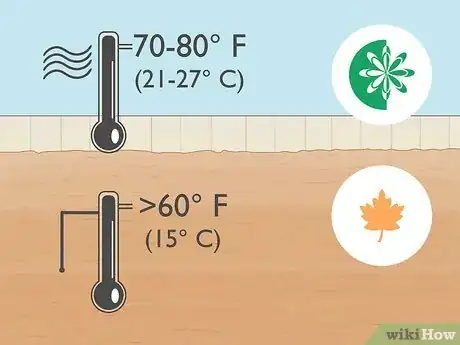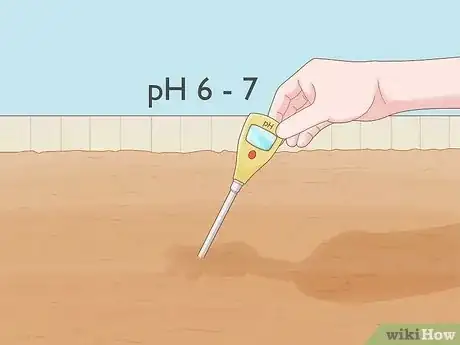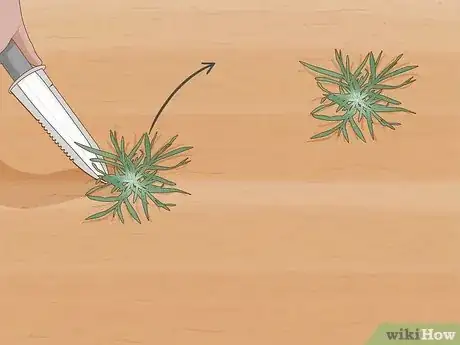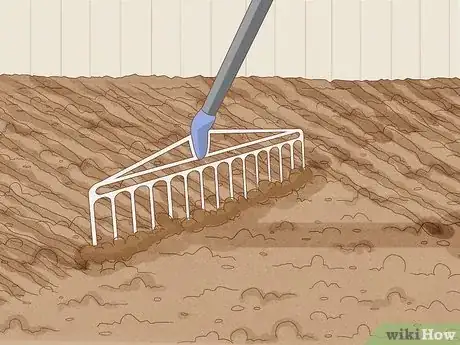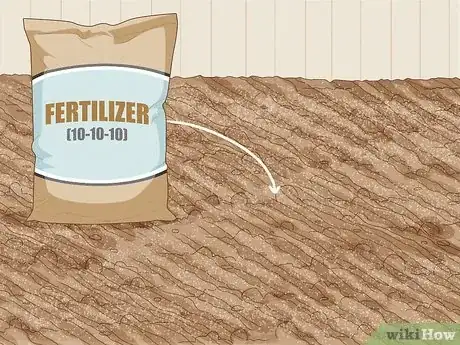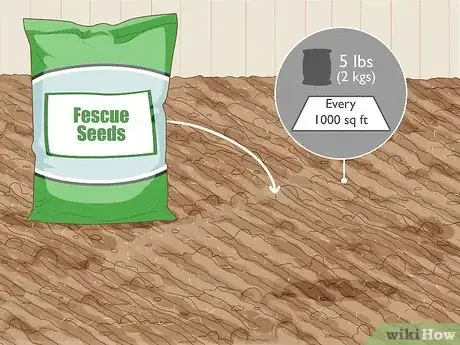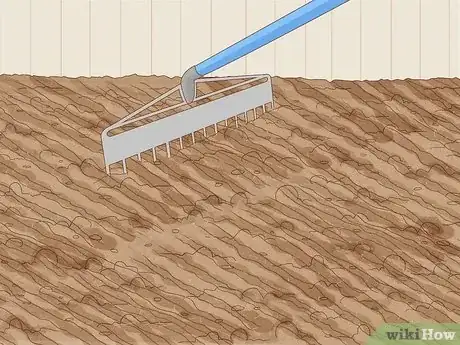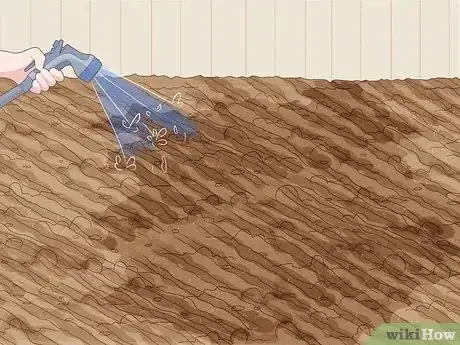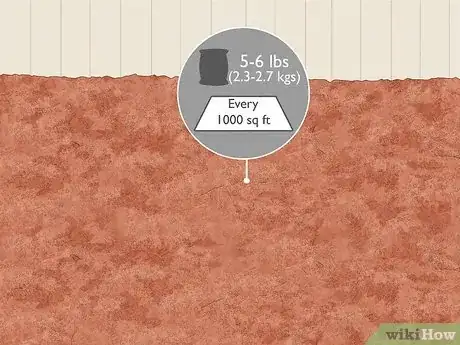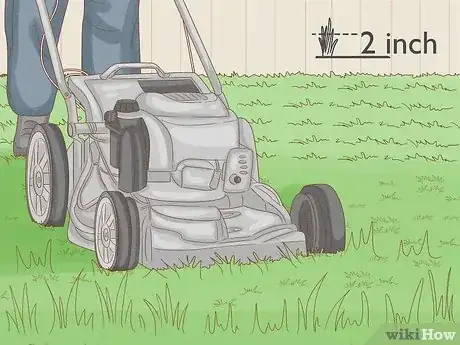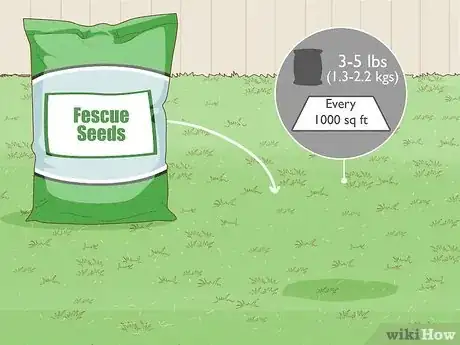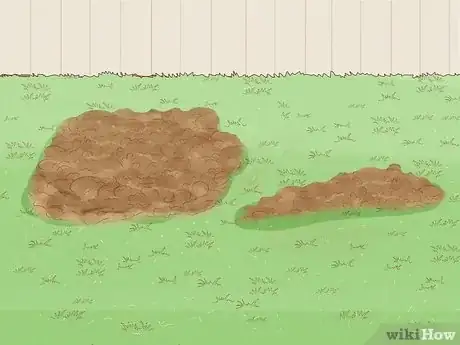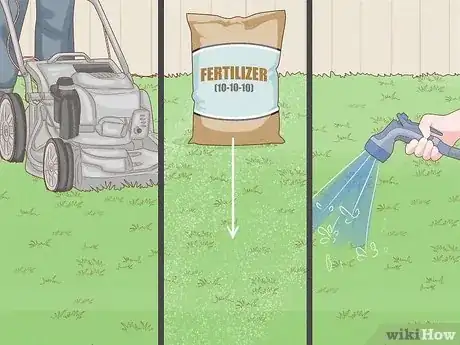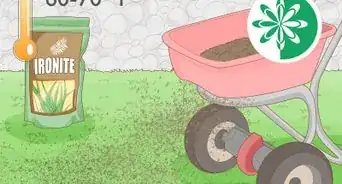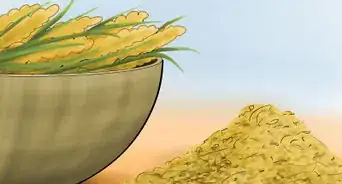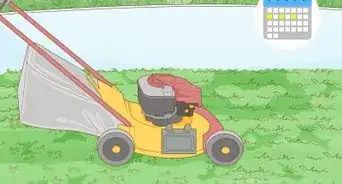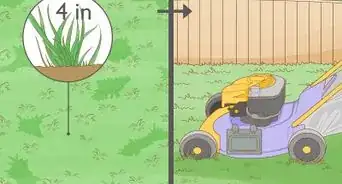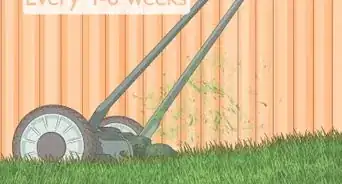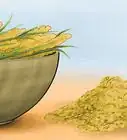This article was co-authored by Lauren Kurtz. Lauren Kurtz is a Naturalist and Horticultural Specialist. Lauren has worked for Aurora, Colorado managing the Water-Wise Garden at Aurora Municipal Center for the Water Conservation Department. She earned a BA in Environmental and Sustainability Studies from Western Michigan University in 2014.
There are 8 references cited in this article, which can be found at the bottom of the page.
This article has been viewed 23,818 times.
Fescue is a hardy grass that grows in cool weather and browns during the summer. In spring or fall, new fescue seeds can be planted after clearing an area of vegetation or mowing old grass. Plant over an empty soil by tilling and fertilizing the soil. Existing fescue lawns can also be reseeded. Give it new growth by aerating the soil and and mixing in fresh seed.
Steps
Finding a Planting Spot
-
1Wait for spring or fall. Fescue grows when the soil temperature is above 60° F (15° C). The air temperature will be between 70-80° F (21-27° C). The ideal climate occurs in spring before the temperature starts to climb for summer. It also occurs again in autumn as temperatures fall.[1]
- Planting fescue in fall is the best bet for a healthy lawn.
-
2Test the soil’s pH. Fescue does best in slightly acidic soil. Get a testing kit from a garden center before planting time. Perform the test before planting so you don’t waste time and money on a disappointing growth. The proper soil for fescue has a pH between 6 and 7.[2]
- Treat acidic soil with garden lime. Treat alkaline soil with compost or other soil conditioners.
Advertisement -
3Kill weeds two weeks before planting. Unless you are reseeding a fescue lawn, get a weed killer that lists glyphosate on the label. Glyphosate will kill all plants, including grass. Spray the weed killer over the area once or twice to remove all vegetation.[3]
- Please note: The WHO considers glyphosate to be a probable human carcinogen. Its use is prohibited in some states and countries. Please check with your local laws and use caution if handling this chemical.
- When reseeding, you may try a gentler herbicide safe for grasses. To protect the fescue, it is better to mow or pull out the weeds by hand.
Seeding Fescue in an Empty Area
-
1Till the area. Get a garden tiller or tractor tiller. Move back and forth from one side of the planting area to the other. The tiller should reach six inches (15 cm) deep, and you may wish to go back over the area a second time to make sure the soil is turned enough. Finish by leveling the soil with a rake.
- Rent a tiller from a home improvement store if you don’t have one.
-
2Fertilize the area. Fertilizer can be added before or after you lay the seeds. Choose a starter fertilizer, which provides a balance of nutrients for a new lawn. Look for a fertilizer that’s high in nitrogen and includes phosphorous and potassium.[4]
- You’ll see that fertilizer bags have a series of 3 numbers on them. These numbers represent the amount of nitrogen, phosphorous, and potassium in the fertilizer, and are known as the NPK value. Look for a fertilizer with an NPK value of 16-4-8.
-
3Plant your seeds. You’ll need about five pounds (2 kg) of fescue seed for every 1,000 square feet (93 square meters). Use a seeding device or spread the seeds evenly over the area by hand. Don’t be afraid to spread plenty of seed over the area. This will ensure the lawn looks full once the fescue has grown.[5]
-
4Rake over the area to cover the seeds. Go back over the area with a rake. Drag the rake over the entirety of the soil’s surface to mix in the seeds. A hand roller may also help you smooth out the area.
-
5Water the area. Use an irrigation system or a hose to cover large areas of fescue seed. Apply about an inch of water (2 cm) so that the top inch or two of soil stays moist. This should be done once a week to keep the soil moist until the seeds sprout.[6]
-
6Spread mulch over the area. Get a certified weed-free mulch, such as wheat straw or paper straw. You’ll need about 5 to 6 pounds (2.3 to 2.7 kg) per 1,000 square feet (93 square meters). Spread the mulch so it forms a light covering over the soil. Mulch helps the soil retain moisture, causing the fescue to grow faster.[7]
Reseeding Fescue
-
1Mow the lawn. Cut the existing fescue down to size so that new seed reaches the soil. Set the lawnmower to cut the grass one to two inches (2-5 cm) high. Remove any lawn clippings with a rake.[8]
-
2
-
3Sow new seed. You’ll need about three to five pounds (1.3-2.2 kg) of fescue seed per 1,000 square feet (93 meters). Spread the seed over the lawn, making sure to cover the areas that look thin.[10]
- Avoid overseeding, or planting too many seeds, which can be needlessly costly. Overseeding will also cause too much competition between plants and produce weak seedlings.
-
4Cover the seeds with soil. Raking the area will help get the seeds safely into the soil. A hand roller is also useful and will even out the soil without damaging the grass. In a pinch, an object such as a piece of carpeting or chain-link fence will also work. Drag it along the area to smooth the soil.
-
5Treat the lawn as normal. As time passes, continue mowing the lawn as necessary to about three inches (8 cm) tall. Add nitrogen-rich fertilizer as needed to encourage growth. Also, keep the soil moist. Give the fescue up to an inch (2 cm) of water a week.
Community Q&A
-
QuestionWhen is the best time to plant fescue?
 ChrisTop AnswererThere are two times in the year when fescue will grow best: spring and autumn. Just before summer, when temperatures are beginning to climb, or right after summer, when temperatures are just starting to fall.
ChrisTop AnswererThere are two times in the year when fescue will grow best: spring and autumn. Just before summer, when temperatures are beginning to climb, or right after summer, when temperatures are just starting to fall. -
QuestionWhat temperature is needed to grow fescue?
 Community AnswerFescue seeds grow best at an air temperature of 65 to 78° F (18 to 25° C) and at a soil temperature of 60 to 65° F. (15 to 18° C.)
Community AnswerFescue seeds grow best at an air temperature of 65 to 78° F (18 to 25° C) and at a soil temperature of 60 to 65° F. (15 to 18° C.)
References
- ↑ https://chatham.ces.ncsu.edu/2014/09/time-to-seed-tall-fescue/
- ↑ http://extension.psu.edu/plants/crops/forages/species/tall-fescue
- ↑ https://www.supersod.com/diy/how-to-seed-a-tall-fescue-lawn.html
- ↑ http://extension.missouri.edu/p/G4646
- ↑ http://www.walterreeves.com/lawn-care/fescue/rescue-the-fescue-a-fall-planting-guide/
- ↑ http://caes2.caes.uga.edu/commodities/turfgrass/georgiaturf/Articles/Misc/Seeding_TF_Lawns.pdf
- ↑ http://www.walterreeves.com/lawn-care/fescue/rescue-the-fescue-a-fall-planting-guide/
- ↑ http://caes2.caes.uga.edu/commodities/turfgrass/georgiaturf/Articles/Misc/Seeding_TF_Lawns.pdf
- ↑ http://www.turffiles.ncsu.edu/news/spring-seeding-tall-fescue
